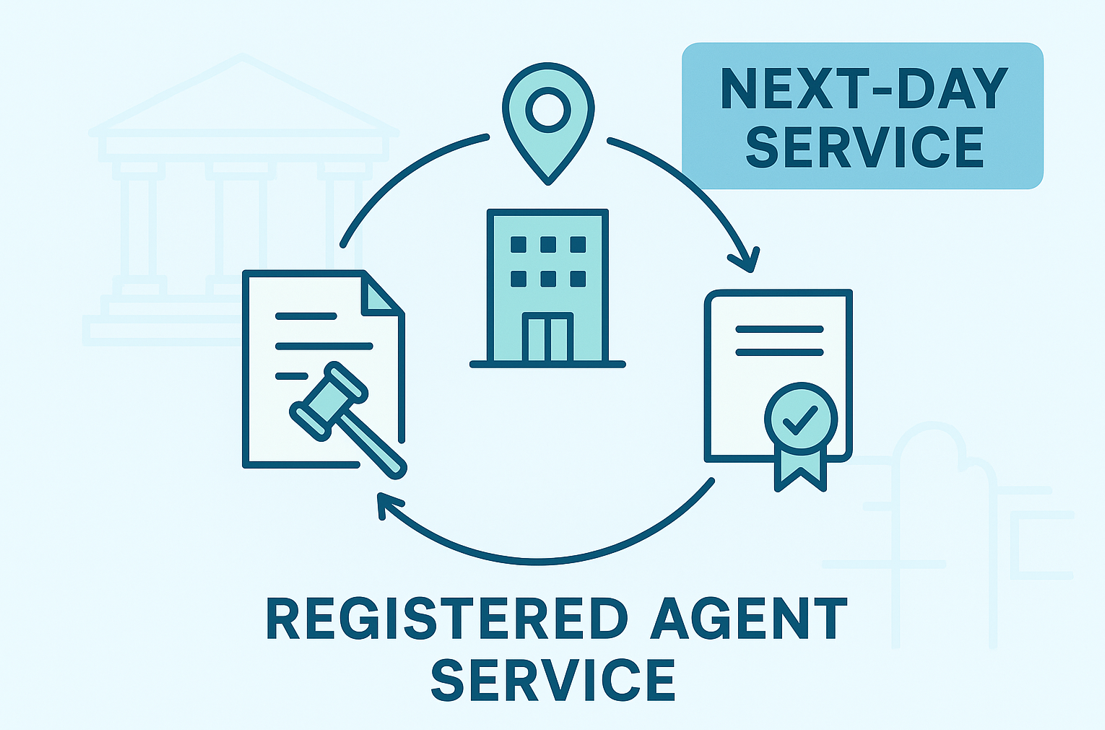If you’re reading this article, Congratulations! You must be thinking about starting a law firm and are looking for examples of a business plan for lawyers.
Of course, if you’re serious about this prospect, one of the first things you’ll need to do is sit down and draft a business plan. And, as luck would have it, that’s why we’re here today.
In this post, we’re going to walk you through the steps of creating a business plan for your new firm. As Aristotle once said, “For the things we have to learn before we can do them, we learn by doing them.”
Sound advice.
A simple guide for a business plan for lawyers
So, we’ll provide you with the key parts and pieces for creating a law firm business plan along with a sample plan intended to show you how to create your own plan.
Now, in order to walk you through this, we’ve created a hypothetical firm using certain assumptions, which we’ll list below. Your new firm almost certainly has different factors at play.
That’s alright. We trust you’ll be able to plug in the particulars that suit your business. For now, here’s what our fictional new law firm looks like:
- This California-based law firm is founded by four partners who were all business owners before going to law school. Using our fictional founders’ last names, we’ll call the firm Smith, Jones, Jackson, & Wyle, LLP.
- The firm aims to have multiple practice areas including business litigation, labor and employment, technology, and real estate.
- The target clients will be small-to-midsize regional businesses throughout the state.
- The partners’ goal is to hire up to 10 associates over the next five years.
- The firm’s main competitors are other small, regional business-focused firms.
- Initial marketing ideas include social media, networking with former business contacts, and becoming thought leaders in various areas of the law through blogging and public speaking.
- The partners envision being highly tech dependent, utilizing CRMs, AI, and other tech tools as much as possible.
- The founding partners’ goal is to launch the firm in 6 months and to be profitable within a year.
With those basic facts in mind, let’s break down the various components that we’ll include in our business plan:
1. Executive summary
A business plan for lawyers, like any plan, should start with an executive summary. This section concisely outlines a business plan’s key points, goals, and strategies. Ultimately, it serves as a snapshot for quick understanding and decision-making and should include the following parts:
Mission statement
A Mission Statement is like the elevator speech for your new firm. It charts the course for your goals, objectives, clients – and also quickly lays out your proposed methods for reaching those goals. A sample Mission Statement for our firm might say:
At Smith, Jones, Jackson, & Wyle, LLP (“SJJW”) we are dedicated to empowering small-to-midsize businesses in California with comprehensive legal solutions. With a foundation built on the rich business acumen and legal expertise of our founding partners, we aim to bridge the gap between business challenges and legal success. Our mission is to provide personalized, effective, and technology-driven legal services that not only address today’s legal needs but also anticipate tomorrow’s challenges. We are committed to becoming trusted advisors to our clients who leverage our unique background as former business owners to offer practical, actionable legal advice. Through innovation, integrity, and a client-focused approach, SJJW strives to achieve excellence in all aspects of our service, fostering long-term partnerships with our clients and contributing to their success.
Objectives
Here, you will outline the firm’s growth objectives and provide a snapshot of the firm’s operations.
Sample:
SJJW aims to become the leading legal advisor for California’s small to mid-sized businesses, expand our team with 10 associates within five years, and leverage technology to enhance efficiency and client satisfaction.
Brief overview
Some business plans also include a brief overview of the business. Our hypothetical firm’s overview might look like this:
Founded by four partners with business ownership backgrounds, our California-based law firm specializes in serving small-to-midsize businesses, emphasizing technology-driven solutions and personalized legal services to navigate complex challenges.
2. Firm description
Your law firm description will provide a bit more detail about the make-up of your business. This section should include information on: (1) legal structure and history; (2) location and areas of practice; and (3) vision for the future:
Sample:
SJJW is a dynamic legal partnership founded by four seasoned attorneys who are also experienced business owners. Based in California, our firm offers comprehensive legal services tailored to the needs and challenges of small-to-midsize businesses across the state. Our firm practices in four distinct areas: Business Litigation, Labor and Employment, Technology, and Real Estate. With a deep understanding of both the legal landscape and the entrepreneurial journey, our team is uniquely positioned to provide strategic, effective solutions across this range of legal disciplines. As an LLP, we emphasize collaboration, integrity, and innovation, leveraging cutting-edge technology to deliver exceptional service and outcomes for our clients. Our commitment to excellence, combined with our business-savvy approach, makes us a trusted partner for businesses seeking to navigate legal complexities with confidence.
3. Market analysis
The next part of our business plan for lawyers is the market analysis. Your market analysis is where you do the heavy lifting around how your firm fits into California’s extensive legal market. It should include information on your target market, a competitive analysis, and the need for your particular firm within the region.
Sample:
Target market
SJJW’s primary target market consists of small-to-midsize businesses in California, spanning various industries such as technology, retail, real estate, energy, and manufacturing. These businesses often encounter unique legal challenges that require personalized attention and expertise. With the state’s diverse economic landscape, there is a substantial demand for legal services that cater specifically to the nuanced needs of these entities, from regulatory compliance and intellectual property protection to labor disputes and contract negotiations.
Competitive landscape
The legal services market in California is highly competitive, with numerous firms vying for the business sector’s attention. Small, regional law firms similar to ours form the bulk of this competition, offering a range of general and specialized services. However, our differentiation lies in the unique blend of legal expertise and real-world business experience possessed by our founding partners. This combination positions us to offer unparalleled insights and practical solutions that resonate with business owners.
Market trends
The increasing complexity of regulatory environments, coupled with the rapid evolution of technology and the digital economy, has led businesses to seek legal partners who are not only advisors but also innovators. There’s a growing trend towards legal services that are highly specialized yet broadly knowledgeable about the cross-functional impacts of legal decisions.
Opportunities
Given our firm’s unique positioning and expertise, significant opportunities exist to capture market share by:
- Offering specialized services that address the intersection of business operations and legal requirements, such as compliance, data privacy, and e-commerce.
- Developing niche expertise in emerging areas of law that are particularly relevant to California’s business environment, such as tech startups, renewable energy, and digital media.
- Leveraging technology to provide more efficient, transparent, and cost-effective legal services, appealing to the tech-savvy and cost-conscious small-to-midsize business sector.
- Building strong relationships through networking and thought leadership, establishing the founding partners as go-to experts in legal matters relating to business.
Challenges
Key challenges include establishing a distinct brand in a crowded market, continually adapting to rapidly changing legal and technological landscapes, and ensuring the firm remains accessible and appealing to the target market’s cost and value expectations.
In summary, the market analysis underscores the potential for SJJW to carve out a significant presence in California’s legal services sector for small-to-midsize businesses. By focusing on our strengths and strategically addressing the market’s needs, we can achieve substantial growth and success.
4. Marketing and sales strategy
The marketing and sales strategy is a crucial but often neglected aspect of any business plan for lawyers. This is where you lay out how you’re going to attract clients, convince them to use your firm’s services, and – importantly – how you’re going to retain those clients long term:
Sample:
Objective
Our objective is to establish SJJW as the premier legal service provider for small to mid-sized businesses in California, leveraging our unique blend of business acumen and legal expertise.
Marketing strategy
Brand positioning
Position the firm as not just legal experts, but as partners in our clients’ business success, emphasizing our founding partners’ background as business owners.
Digital marketing
- Website: Develop a professional website highlighting our expertise, services, and the unique value we bring to businesses.
- Content marketing: Regularly publish blogs, articles, and whitepapers on legal issues affecting our target market, positioning us as thought leaders.
- Social media: Engage with our audience on platforms like LinkedIn and Twitter, sharing insights, legal updates, and participating in discussions relevant to our target industries.
Networking and partnerships
- Leverage the existing business contacts of our founding partners and actively participate in industry events, seminars, and local business associations to build relationships and referrals.
- Establish partnerships with complementary service providers (e.g., accounting firms, business consultants) to offer bundled services or referrals.
Public relations
- Engage in speaking opportunities at industry conferences, webinars, and local business events to increase visibility and establish credibility.
- Utilize press releases for significant firm milestones, new service offerings, or significant case wins to build brand awareness.
Sales strategy
Client acquisition
- Implement a CRM system to manage leads and opportunities effectively and utilize personalized follow-up and engagement strategies.
- Offer free initial consultations to prospective clients that provide immediate value and foster trust from the first interaction.
Client retention
- Provide exceptional client service with a focus on transparency, regular communication, and technology-driven solutions for ease of access and efficiency.
- Implement a client feedback loop to continuously improve services and address client needs proactively.
Cross-selling and up-selling
Once a client relationship is established, SJJW will identify additional legal needs or areas where the firm can provide value. The goal is to make sure all clients are aware of the full range of services offered.
By executing this comprehensive marketing and sales strategy, SJJW aims to rapidly grow its client base while maintaining high levels of client satisfaction and loyalty.
5. Operations plan
An operations plan outlines the day-to-day activities required to run your law firm. It details things like processes, technology, staffing, and resources needed to achieve business objectives.
Sample:
Objective
To ensure efficient, effective, and client-focused legal service delivery through advanced technology integration and streamlined processes.
Legal operations
Case management: Implement a state-of-the-art Case Management System (CMS) to track and manage all cases efficiently, ensuring deadlines are met, and clients are kept informed.
Document management: Utilize a secure, cloud-based Document Management System (DMS) for storing, retrieving, and sharing documents with clients and within the team, enhancing collaboration and security.
Client communication: Adopt Customer Relationship Management (CRM) software to manage client interactions, ensuring personalized and timely communication across all touchpoints.
Technology integration
Artificial Intelligence (AI): Leverage AI tools for legal research, document review, and predictive analytics to increase accuracy and reduce turnaround times.
Automation tools: Implement automation in routine tasks such as billing, client notifications, and document drafting to improve efficiency and reduce the risk of human error.
Human resources
Team structure: SJJW will initially be comprised of four partners and support staff, with plans to expand to up to 10 associates within five years. It is our goal to foster a culture of teamwork and continuous learning.
Professional development: Invest in ongoing training and professional development opportunities for all staff, ensuring the team remains at the forefront of legal and technological advancements.
Client service
Service delivery model: Offer flexible service models including traditional hourly billing and alternative arrangements like flat fees for defined services.
Client feedback system: Implement a system for collecting and acting on client feedback to continually refine and improve service offerings.
Compliance and quality assurance
Regulatory compliance: Ensure strict adherence to legal and ethical standards, with regular reviews of compliance protocols, especially regarding data protection and privacy laws.
Quality control: Establish a quality control framework to review legal work internally, guaranteeing the highest standards of legal service.
6. Financial plan
Your financial plan is one of the most critical aspects of a business plan for lawyers. There are too many factors at play here for us to create a meaningful sample plan for our hypothetical firm, but here are the details you definitely want to include in your plan:
Initial capital and use
Detail how the initial capital provided by the founding partners will be allocated (e.g., office space, technology, marketing, initial payroll).
Financial projections
Include projections for revenue, expenses, and profitability for the first 1-5 years. Use realistic assumptions based on the size of your target market, expected client acquisition rates, billing rates, and operational costs.
Revenue projections
Estimate potential earnings from client work, taking into account the growth in associate numbers and the capacity to handle more cases and matters.
Expense projections
Forecast expenses, including salaries, technology investments, office overhead, and marketing costs.
Profitability analysis
Calculate when the firm expects to become profitable. Our hypothetical firm, for example, aims to be profitable within the first year.
7. Legal and regulatory compliance
What kind of lawyers would you be if your plan didn’t include a section on legal and regulatory compliance? A business plan for lawyers should always cover compliance, particularly in an environment where it is becoming increasingly important for firms to accommodate it.
This is where you’ll provide details regarding legal practice, data protection, and any relevant regulations for your areas of practice.
Sample:
Objective
To uphold the highest standards of legal and ethical integrity by ensuring full compliance with all applicable laws, regulations, and professional guidelines governing the practice of law in California.
Compliance framework
State Bar of California: SJJW will strictly adhere to the rules and ethical standards set forth by the State Bar of California, including those related to client confidentiality, conflict of interest, and professional conduct.
Data protection and privacy: We will implement powerful data security measures compliant with the California Consumer Privacy Act (CCPA) and any relevant federal laws. We will also protect client information through encrypted storage and secure communication channels.
Business operations compliance: As an LLP, SJJW will maintain compliance with California’s business operation laws, including partnership registration requirements, financial reporting, and tax obligations.
Employment law: It is our steadfast aim to follow all state and federal employment laws, ensuring fair labor practices, workplace safety, and equal opportunity employment within the firm.
Continuous monitoring and education
Regular training: We will conduct or host ongoing legal education and training for all partners and staff on compliance matters, changes in the law, and best practices in legal ethics and data protection.
Compliance audits: The firm will perform regular internal audits to review and assess compliance with all legal, regulatory, and ethical standards, identifying and rectifying any potential issues proactively.
Risk management
Professional liability insurance: Before beginning operations, SJJW will secure comprehensive professional liability insurance to protect the firm and its clients against potential legal malpractice claims or other claims.
Conflict of interest checks: The firm will implement a rigorous system for conducting conflict of interest checks for every new client and case, with the goal of preventing ethical breaches and maintaining the firm’s integrity.
Client confidentiality and trust
Confidentiality protocols: SJJW will establish strict confidentiality protocols to protect client information, including secure document handling procedures and restricted access to sensitive data.
Client trust accounts: In accordance with California law, the firm will manage client funds with the utmost care, adhering to the State Bar’s guidelines for handling and accounting for trust accounts, ensuring transparency and accountability.
8. Milestones and timeline
Finally, a business plan for lawyers should include a section that details the timing involved in getting your law firm up and running. Again, there are probably too many details to give an effective sample here, but at the very least, your plan should include the following components:
Launch timeline
Here, you’ll plot out the key steps leading up to your launch date, including legal organization, the establishment of your office space, technology implementation, and initial marketing.
Growth milestones
Lawyers love deadlines and the growth milestones section is a good place to create them. Set specific goals for things like client acquisition, revenue targets, and team expansion to be reached within the first year and beyond.
Obviously, your firm’s business plan will include a lot more detail than our hypothetical plan for SJJW. We hope, however, that this sample plan gets you started on an enjoyable journey to starting a successful law firm.
Conclusion
Starting a law firm is a challenging yet rewarding endeavor. A well-crafted business plan for lawyers means getting all the essentials in place to guide your firm’s growth and success.
Get your executive summary, firm description, market analysis, marketing and sales strategy, operations plan, financial plan, and legal compliance all covered before embarking.
With careful planning and execution, you can build a firm that not only meets but exceeds your expectations, providing exceptional legal services to your clients.








